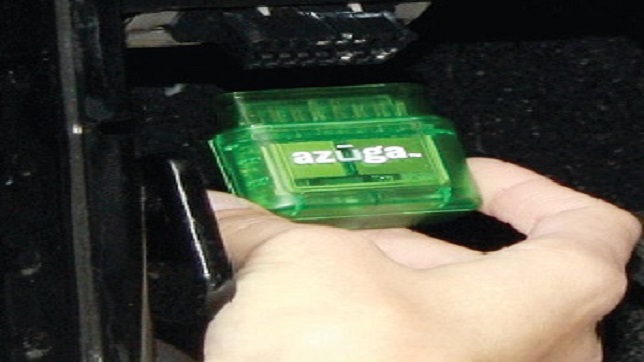ROI of Telematics
Overview
Being one with technology is the need of the hour, owing to such rapid development. And every industry on the face of the earth is jumping on the technological bandwagon, if they have not done so already.
So when we look at the transportation sector, integration of Telematics has been the reason why we see an escalation in the profit margins and efficient operations for this industry. For fleet owners, Telematics is not a luxury; it is an investment. And every investment warrants significant returns, such that it is classified as a wise choice.
Here, we talk about the Return on Investment (ROI) of Telematics and Vehicle Tracking System, and how the impact has brought about a seismic shift in this industry’s operations.
A Brief On Telematics
Telematics can be defined as the amalgamation of two segments of technology: Telecommunications and Informatics. This slice of technological development, when combined with analytical tools, gives you significant ROIs to benefit from. Telematics ensures that with the aid of telecommunications devices, one can communicate with and control remote objects, namely vehicles.
Along with that, Telematics devices also provide a host of automotive data, from vehicle insights to driver behaviour to servicing alerts, and what not. This has emerged as a key business tool for fleet owners, as they have the ability to track, analyse and consequently improve their freightage and supply chain operations. Automation is not a distant dream anymore. By considerably lowering down manual labour, Telematics has enabled fleet owners to get value for the money they have invested, and then some more.
ROI of Telematics
Telematics is an essential part of modern vehicle tracking systems. This ecosystem of fleet management comprises of a device (a vehicle tracking system) and a fleet management tool with systematic computational analysis of data retrieved (Telematics).
These detailed insights into how your fleet is functioning is the reason why you are able to manage your fleet, enhance your business practices and create a satisfied customer base. And on these three legs stands your desired objective: to improve your bottom line. Once your bottom line starts getting better, you will automatically see a steep rise in positive returns.
ROIs of Telematics are plenty, but these are bifurcated into tangible and intangible ones. While businesses focus more on the quantified returns, we must not dismiss the underlying gains that come with Telematics solutions.
Installation of Telematics devices in your fleet is not a one-time cost upfront; apart from buying the devices to installation, regular monthly/annual subscription fee is an ongoing expenditure. Moreover, the cost of the device is also dependent upon the size of your fleet, your contractual agreement with your Telematics solutions provider and whether you require customised statistical information.
However, as a fleet owner, it is important that you acknowledge that the data collected and interpreted by the Telematics device is actionable. Discerning a baseline and taking action on the results is highly crucial.
Returns on Cost
Telematics has an important impact on any organisation working in the freight industry, especially when we talk in monetary terms. The quantifiable returns in this investment are characterised mainly by the cost saved on fuel, and secondly, manpower.
By staying updated on the functioning of your fleet, and monitoring the fuel consumption, expenditure on fuel is considerably abated. Also, this allows you to be aware about any vehicle in your fleet malfunctioning and using up more fuel than it actually should. You save a fair bit on cost when you know what the emission rate of your vehicles is, and can enjoy the perks of “going green” eventually.
In terms of manpower, fleet management entails a lot of paperwork and communication efforts, when done manually. This poses as a problem since most of the crew in any transportation organisation is sometime or the other on the road. Hence, there are chances of loss of revenue due to miscommunication and lack of proper surveillance. But with telematics, you can easily avoid that. You can keep a pulse on your drivers, and can track their movements in real-time.
When we talk about the indirect savings and subsequent returns, there is much to tell. Vehicle maintenance becomes easy and fruitful for the fleet owner, as they are always updated with their fleet’s health and welfare. Moreover, Telematics has a pivotal role to play when it comes to insurance claims, as every movement and location is appropriately documented and verified. Ultimately, you save money on heavy repairs that you easily could have avoided, and get good premium rates from your insurance provider.
Returns on Data
Another key aspect of Telematics is its relationship with data. And since every business invariably works on numbers, making your fleet data driven is one of the ultimate ROIs you can hope for.
Managing your workforce from a single focal point is no easy task, but telematics solutions aid you in that. Data on driving patterns and driver’s behaviour is crucial in determining whether your crew is adhering to all safety standards, thus improving your operations and your brand’s reputation.
Operational efficiency also increases since you are aware of the delivery timelines, and if all scheduled shipments are being delivered on time. This ensues supply chain optimisation, and makes your business a more transparent and reliable enterprise.
Another feature is how secure the data is when telematics is the communication channel. Since sensitive business information is being relayed back and forth, loss of this data can also put your finances, and your organisation, at risk. But with Telematics solutions, information travels in an encrypted fashion, and you can be assured that all data is visible to only those eyes that it is meant for.
A Holistic View Into Telematics ROI
Apart from the benefits mentioned above, you must take note of the following additional advantages that can improve the return on your investment in Telematics. These are:
- Theft prevention, which saves cost on recovering the stolen vehicle or replacing it with a new one.
- A transparent communication channel with your crew, so that there is no lag in information relay and smooth operation delivers a happy workforce.
- Route optimisation, saving time and money on taking unnecessary long routes and avoiding peak traffic areas.
- Customer satisfaction, which can happen only when strict delivery timelines are maintained and targets achieved. This will most certainly expand your business, since a happy customer is more likely to recommend your services to others in their network.
- Employee safety, which is ensured by an emergency SOS button deployed on the telematics device. The trigger alerts sent when that button is pressed makes the fleet owner aware about any casualty that may have happened. Thus, they can take appropriate measures to send aid to their crew.
- Combat idling, since alerts on unauthorised breaks or needless idling are sent immediately to the fleet owner, saving big on fuel, time and harmful emission.
ROI on telematics and vehicle tracking system can be the direct cost saved, or indirectly cost avoided. The compound effect of this, when you take a look at the bigger picture, is that optimisation of business operation and fleet management is expedited. Thus, it is safe to conclude that the financial, and situational, benefits of fleet telematics are a reward worth investing in.
Author: Shubham Bhaskar Sharma
Loconav


